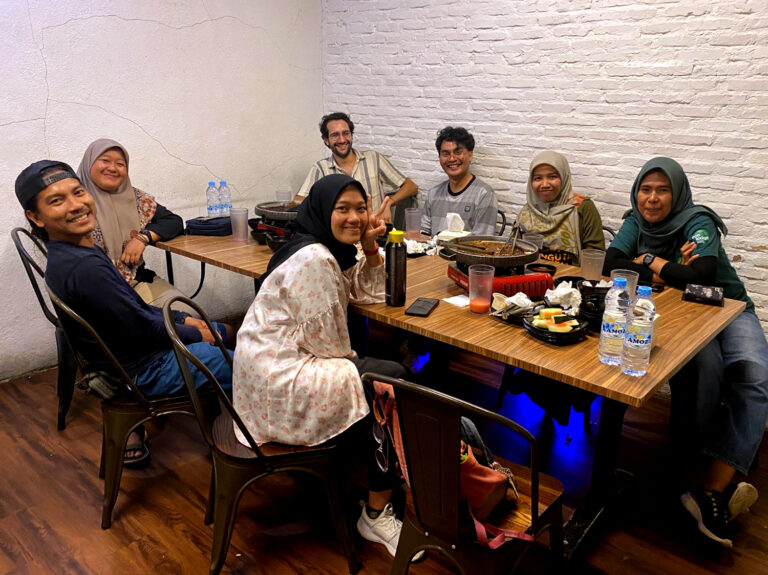Community service in Medan: making biodiversity measurable

Community service in Medan: making biodiversity measurable
«I spent almost four months as a civilian volunteer in Indonesia, working with the local sister foundation YEL. The office is in Medan, a metropolis with about as many inhabitants as half of Switzerland. From here, YEL manages a whole range of nature and species conservation projects, the best-known of which is the orangutan conservation programme. As a geographer and environmental scientist, I work in the field of rainforest conservation and advise individual research and monitoring projects. In October, I was warmly welcomed by two teams consisting of young, motivated, and talented biologists. The biodiversity team monitors biodiversity and its possible threats in protected areas. With the help of field surveys, smart patrols and photo traps, the researchers collect a lot of data that need to be processed and analysed. The GIS team works in the field of geographic information science and processes geographic data, for example to analyse deforested areas. My task during my assignment is to advise and train the two teams on various data processing tools and modelling in the R programming language. I also develop more codes for R.

Bioacoustics – the science of sounds in nature
Sounds in nature can reveal many things, such as what kind of animals are present in an area. For this purpose, we record the soundscape in a certain area around the clock. The biodiversity team is made up of experts who can recognise animal sounds in these recordings – but analysing the recordings manually would be far too time-consuming. We are therefore trying to automate the recognition of animal sounds using “machine learning”. When I arrived, the team didn’t have much experience with machine learning, but they quickly learnt how to use it.
In the first few weeks, I mainly taught Junaydy how to feed a machine learning model with training data from animal sounds and then evaluate it. Some of the results were frustrating and we had long working days to resolve the problems. But it was also a great opportunity to get to know him better right at the beginning. The first highlight of my work was that four people from the team were able to present the results at a scientific symposium in
Yogyakarta. Junaydy subsequently won a bioacoustics fellowship at Cornell University in New York. The young scientist will receive six months of training in North America and will in future be the bioacoustics expert at YEL – a huge opportunity for him and the organisation!

A trip to the research area
A few weeks ago, the Bioacoustics team took me on a trip to the research area in Leuser National Park. On the long journey, we first drove about three hours out of the city to a river, where we changed to a boat and travelled upstream for another hour. For the first part of the journey, there were palm oil plantations on both riverbanks until we reached a dense forest with tall trees. In the middle of this forest is a simple research station, which has everything you need for living and research. Here we experimented with bioacoustics recordings while the biodiversity team went on smart patrol to document animal tracks and threats such as bird traps. The local assistants at the station collect research data throughout the year. They are also talented fishermen and star chefs, who sometimes sang beautiful songs in the evenings at the research camp.




Life in Medan
In the metropolis of Medan, my everyday life as a civilian is very urban. I live in a house with Sebastian, another civilian from Switzerland, bamboo expert Gilbert Murer, who oversees construction at Orangutan Haven, and my work colleague Ben from the research team at YEL. We travel to the office together on the moped that Sebi bought, or I take a moto-taxi, which you can easily order via an app. In general, I am surprised at how present digitalisation is in everyday life in Indonesia. We often order our food to the office via an app.


If you want to enjoy nature, it’s best to leave the city at the weekend, as there are hardly any parks here. Fortunately, we have a beautiful view from the roof terrace, my favourite place at the moment. Although most of the locals speak some English, it’s a must to be able to speak a few words of Indonesian to establish a deeper connection with the people. That’s why Sebastian and I have been attending a language school in the evenings for a few weeks now, and we are learning Bahasa at a rapid pace.
Doing community service in Indonesia is very exciting and rewarding, even if there are challenging moments. I am very grateful for this opportunity, and I am looking forward to seeing what else I will experience in the remaining months!»



